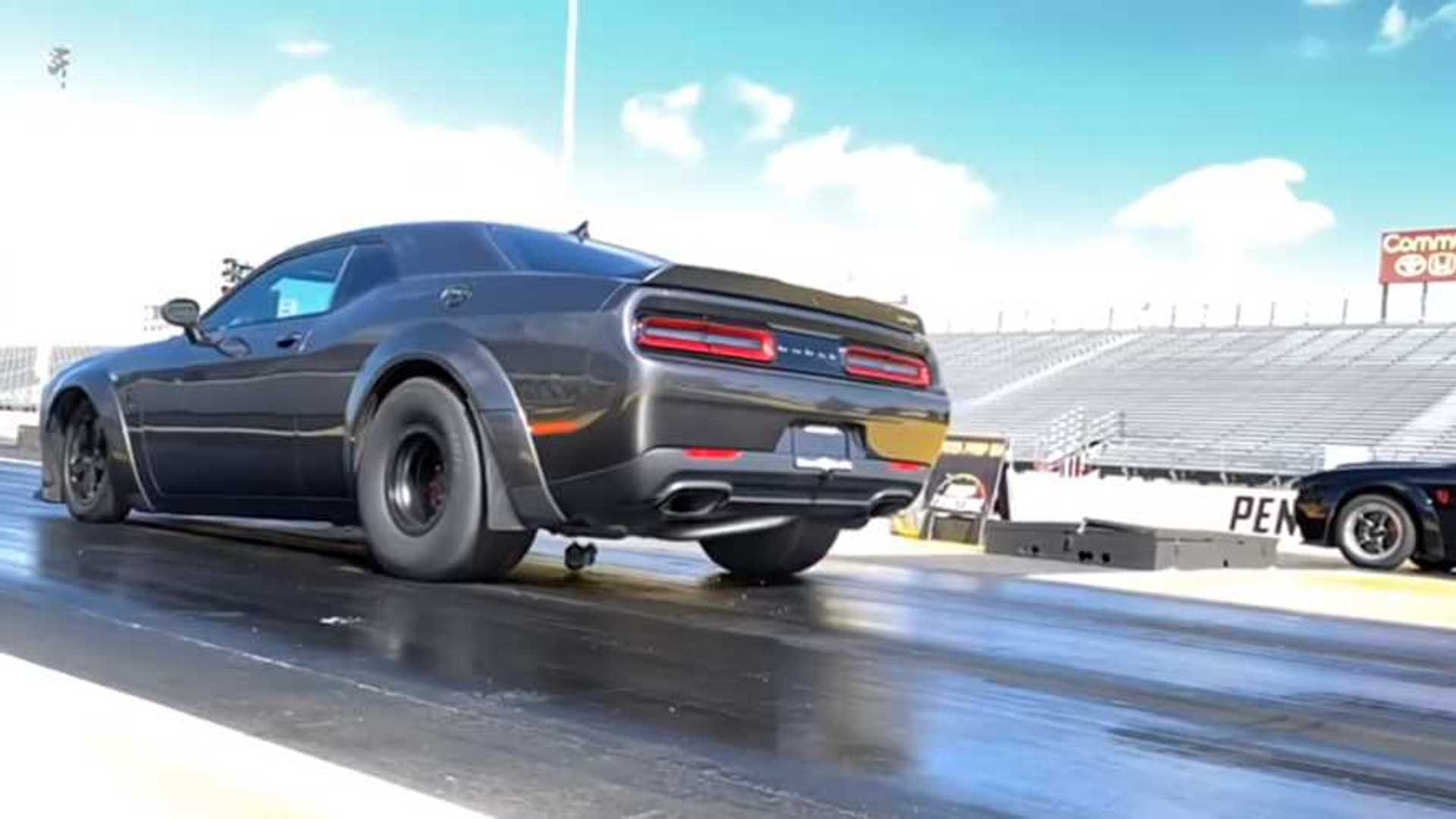I just read this article about a dragstrip event in Texas that had 47 Demons attend. Unfortunately, 5 went home on trailers after suffering rear end failures. It will be interesting to see what Dodge may do about this problem.
Mopar Insiders Forum
You are using an out of date browser. It may not display this or other websites correctly.
You should upgrade or use an alternative browser.
You should upgrade or use an alternative browser.
Dodge Demon Rear Ends Fail
- Thread starter bluskye
- Start date
Interesting, especially since the Demon gets an upgraded rear end shared with only the 1320. Demons and 1320s get heavy duty 41 spline axles compared to the other Challenger Variants. I'm curious as to what part of the rear end actually failed most commonly.
The aluminum housing fails. Watch the video.

 www.motor1.com
www.motor1.com

Dodge Demon Differential Destruction Under Investigation
New information is available on the video showing two Dodge Challenger Demons destroying differentials, and Dodge is also looking into the matter.
IronMike68
New member
- Joined
- Sep 27, 2018
- Messages
- 27
- Reaction score
- 22
- Points
- 3
What is really causing the issue is severe wheel hop ! Every Challenger or Charger that has lost a rear diff is because of this issue from my observation. The ones with dif braces installed seem to have a better chance at surviving this issue. That and the center section being made of aluminum isn't helping the cause either.
What is really causing the issue is severe wheel hop ! Every Challenger or Charger that has lost a rear diff is because of this issue from my observation. The ones with dif braces installed seem to have a better chance at surviving this issue. That and the center section being made of aluminum isn't helping the cause either.
That wouldn't surprise me and has long been an issue with IRS equipped vehicles wheel-hopping until they break parts. I will have to check out the video posted above.
HotCarNut
Member
Maybe so, but FCA tested this vehicle extensively and designed it specifically for these types of launches. For this issue to not show up in testing and for engineering to not have identified it on the stock models would be extremely concerning. I'm wondering if something is out of spec from the supplier on the differentials or if there's a flaw in the casting. Just seems very VERY unusual to have this failure level with the amount of testing that FCA did, especially on a track prepped by the same company that prepped tracks for the FCA tests....What is really causing the issue is severe wheel hop ! Every Challenger or Charger that has lost a rear diff is because of this issue from my observation. The ones with dif braces installed seem to have a better chance at surviving this issue. That and the center section being made of aluminum isn't helping the cause either.
Maybe so, but FCA tested this vehicle extensively and designed it specifically for these types of launches. For this issue to not show up in testing and for engineering to not have identified it on the stock models would be extremely concerning. I'm wondering if something is out of spec from the supplier on the differentials or if there's a flaw in the casting. Just seems very VERY unusual to have this failure level with the amount of testing that FCA did, especially on a track prepped by the same company that prepped tracks for the FCA tests....
True and I know FCA launched the car a TON of times in testing. Definitely curious to see where this goes.
Muther
Active member
I’d say an enormous amount of the fault can go to the drag slicks on the first/gray car.
The second/orange car appears to be using drag radials.
Yes, it will be interesting to see what SRT says.
You can’t rule out abuse, nor can you say it’s not outright failure. Likely it’ll be a combination of things. Stickier tires, abuse, a weak link somewhere, more power.
The second/orange car appears to be using drag radials.
Yes, it will be interesting to see what SRT says.
You can’t rule out abuse, nor can you say it’s not outright failure. Likely it’ll be a combination of things. Stickier tires, abuse, a weak link somewhere, more power.
IMHO as a technician and engineer I say what we are seeing is a cumulative failure under ideal conditions.
Any driveline component can break when stopped or started quickly. I agree with a previous poster on another forum...that is .......the differential(s) were/was over stressed and possibly cracked at a previous date, due to less than ideal track prep conditions...that revealed in catastrophic failure with a perfectly prepared track.
FCA needs to increase the strength of the differential possibly going back to a larger steel center section or increasing the strength of the aluminum design.
Any driveline component can break when stopped or started quickly. I agree with a previous poster on another forum...that is .......the differential(s) were/was over stressed and possibly cracked at a previous date, due to less than ideal track prep conditions...that revealed in catastrophic failure with a perfectly prepared track.
FCA needs to increase the strength of the differential possibly going back to a larger steel center section or increasing the strength of the aluminum design.
